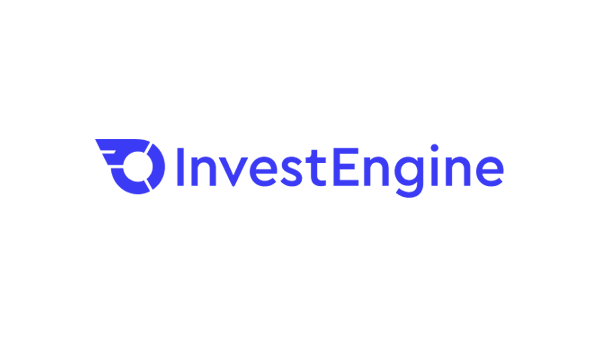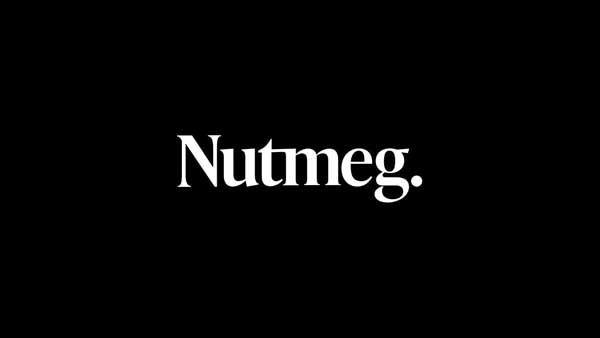There are more people investing in the UK and around the world than ever, thanks largely to technological advances making it easier. Robo advisors are a big part of that, as they utilise automated systems and algorithms to invest for customers and grow their wealth. In this article we will analyse the pros and cons of robo advisors, explain what they are and how they work, and give an overview of the best robo advisor UK.
We at wiseabout.money are keen investors ourselves, and have invested with many different trading platforms in the past, from traditional to fintech. We have taken into account our experiences with investing when assessing each platform. The content in this article is not financial advice but rather information to help in making decisions about which platforms to choose, based on your own requirements and circumstances.
Best Robo Advisor in the UK – Summary
Moneyfarm
Nutmeg
Wealthify
Wombat Invest
Plum
Chip
Moneybox
InvestEngine

- Low platform fees
- Option to trade assets
Table of Contents
Best Robo Advisor UK Reviewed
Moneyfarm
A wider range of portfolios available than some competitors, with a sliding scale that brings the fees down the more you invest.

Founded in Italy in 2011, Moneyfarm have become a popular choice in the UK market largely due to their simple, sliding scale pricing structure and range of investment types. A classic robo advisor, their automated systems choose the best investment strategy for customers.
When you first set up your Moneyfarm account, they will ask you a series of questions. These are designed to allow them to understand as much about your appetite for risk, investment goals, and amount you have to invest. They will then create an investment plan for you.
Moneyfarm Products:
Moneyfarm are a passive platform. Therefore it is not possible to make your own trades, you have to choose which investment type and portfolio, and then let Moneyfarm do the work.
You can choose from a variety of accounts to make your investments in:
- Stocks & Shares ISA – invest up to £20,000 (based on 2023/2024 allowance) tax efficiently.
- Junior ISA – save for their future.
- Personal Pension (SIPP) – Save for your retirement within a tax efficient wrapper.
- General Investment Account – the standard Moneyfarm account where you can hold your investments with no tax advantages.
Moneyfarm Portfolios:
Moneyfarm have a wide range of portfolios in 4 main types:
Actively Managed:
Moneyfarm have 7 main portfolios, which are categorised by risk level, with level 1 having the least risk, and level 7 having the most. It is possible to distribute your investment across several of these levels.
Socially Responsible:
The Moneyfarm Socially Responsible portfolios are very similar to the standard Actively Managed portfolios, but with a different mix of assets, and a very slightly higher annual fee. They are also categorized by 7 risk levels.
Fixed Allocation:
The Fixed Allocation funds are not actively managed, being rebalanced only once per year (this means that they cannot be changed as quickly to reflect market changes). Moneyfarm offer 5 different fixed allocation funds.
Thematic Investing:
Moneyfarm Thematic Funds give investors a change to focus their investments on specific industry areas. Currently they have 4 – targeting technology, society, sustainability, and a fourth combining the first 3.
Moneyfarm Fees:
Moneyfarm fees consist of 3 elements:
- Platform fees – these range from 0.35% to 0.75% for the Actively Managed Portfolios, and 0.25% to 0.45% for the Fixed Allocation portfolios.
- Underlying Fund Fees – each fund (usually an ETF) that you money is invested in has a separate cost, which averages 0.2%
- Market Spread – this covers any differences between buying and selling prices of assets, and Moneyfarm state it is 0.09% on average.
In the below table you can see the total cost with all of the 3 fee elements combined.
| Fund Types: | Actively Managed | Fixed Allocation |
| Annual % | Annual % | |
| Amount Invested | ||
| £500 – £9,999 | 1.04% | 0.74% |
| £10,000 – £19,999 | 0.99% | 0.74% |
| £20,000 – £49,999 | 0.94% | 0.74% |
| £50,000 – £99,999 | 0.89% | 0.74% |
| £100,000 – £249,999 | 0.74% | 0.64% |
| £250,000 – £500,000 | 0.69% | 0.59% |
| £500,000 + | 0.64% | 0.54% |
Then we show the actual amount you will pay in fees depending on the amount you have invested:
| Fund Types: | Actively Managed | Fixed Allocation |
| Annual £ Cost | Annual £ Cost | |
| Amount Invested | ||
| £500 | £5.20 | £3.70 |
| £10,000 | £99.00 | £74.00 |
| £20,000 | £188.00 | £148.00 |
| £50,000 | £445.00 | £370.00 |
| £100,000 | £740.00 | £640.00 |
| £250,000 | £1,725.00 | £1,475.00 |
| £500,000 | £3,200.00 | £2,700.00 |
Moneyfarm Minimum Investment:
The minimum investment amount with Moneyfarm is £500. This is higher than some robo advisor competitors, such as Wealthify, whose minimum investment is just £1. This minimum amount applies across all of Moneyfarm’s product range. They state that they have to have this minimum level, so they can adequately diversify your investment and lower your risk.
Moneyfarm Performance:
Investors should note that past performance of any platform, portfolio or asset does not guarantee future performance. Moneyfarm have published the performance of their Actively Managed portfolios since their UK launch in 2016, which can be seen in the table below.
| Moneyfarm | Competitor Equivalent Portfolio | |||
| Portfolio | Total Return | Annual Return | Total Return | Annual Return |
| 1 | -2.0% | -0.3% | 8.3% | 1.1% |
| 2 | 11.6% | 1.5% | 16.6% | 2.2% |
| 3 | 28.5% | 3.6% | 16.6% | 2.2% |
| 4 | 36.8% | 4.5% | 27.8% | 3.5% |
| 5 | 44.7% | 5.3% | 40.6% | 4.9% |
| 6 | 55.5% | 6.4% | 40.6% | 4.9% |
| 7 | 72.3% | 7.9% | 51.6% | 6.0% |
Bear in mind that portfolio 1 has the least risk, with the risk increasing up to portfolio 7, which is the highest risk.
Moneyfarm Extras:
As a robo advisor, Moneyfarm do not have a huge amount of resources aimed at investment education – unlike some more active investment platforms like Hargreaves Lansdown and Interactive Investor. However, Moneyfarm are unique in that each customer gets an investment advisor they can consult via email, chat or on the phone.
Nutmeg
Great for users who want to invest with a big provider. Their sliding scale of fees rewards those with over £100,000 to invest.

Nutmeg launched in the UK in 2011, and claim to be ‘the largest digital wealth manager in the UK’. They are the largest of the robo advisor platforms in terms of funds held for customers, claiming over £4.5 billion of assets under their management in 2023.
When you first set up your account with Nutmeg, they will gather data about your requirements and situation, which helps them to design your investment plan.
Nutmeg Products:
As a robo advisor, Nutmeg do not give investors the ability to make their own trades. Rather, they set up your investments for you based on your requirements. They offer the following products for you to place your investments in.
- General Investment Account – an account with no special tax status that you can use to make your investments.
- Stocks & Shares ISA – investment up to £20,000 per year (2023/2024 allowance) tax efficiently.
- Lifetime ISA – a tax-efficient way to save for your first home or retirement.
- Junior ISA – allows you to help your young ones save for their future.
- Pension (SIPP) – save for retirement tax efficiently.
Nutmeg Portfolios:
Nutmeg focus on Exchange Traded Funds (ETFs), This gives the investor exposure to a wide range of different assets, which can help to diversify the investment and reduce risk. They have 4 broad types of portfolio:
- Fully Managed – The funds are managed by the internal Nutmeg investment team.
- Smart Alpha – The funds are managed by JP Morgan Asset Management (which is part of the bank that owns Nutmeg).
- Socially Responsible – these funds only include investments that are socially conscious, and managed by the internal Nutmeg investment team.
- Fixed Allocation – these funds are designed to perform without regular management, and are only reviewed once per year.
Nutmeg Fees:
The Nutmeg fees are designed to be simple and are a simple annual percentage, based on the amount you have invested. This fee consists of 3 elements:
- Nutmeg platform fees
- Fund Costs
- Market Spread
The level of these percentage fees depend on the portfolio/investment style you choose:
Fully Managed:
Nutmeg Costs – 0.75% up to £100k, 0.35% on amount above £100k
Fund Costs – 0.20%
Market Spread – 0.07%
Total Cost – 1.02% up to £100k, 0.62% on amounts above £100k. For a total investment of £50,000, this would cost £510 per year.
Smart Alpha:
Nutmeg Costs – 0.75% up to £100k, 0.35% on amount above £100k
Fund Costs – 0.23%
Market Spread – 0.07%
Total Cost – 1.05% up to £100k, 0.65% on amounts above £100k. For a total investment of £50,000, this would cost £525 per year.
Socially Responsible:
Nutmeg Costs – 0.75% up to £100k, 0.35% on amount above £100k
Fund Costs – 0.28%
Market Spread – 0.07%
Total Cost – 1.1% up to £100k, 0.7% on amounts above £100k. For a total investment of £50,000, this would cost £550 per year.
Fixed Allocation:
Nutmeg Costs – 0.45% up to £100k, 0.25% on amount above £100k
Fund Costs – 0.19%
Market Spread – 0.07%
Total Cost – 0.71% up to £100k, 0.51% on amounts above £100k. For a total investment of £50,000, this would cost £355 per year.
Nutmeg Minimum Investment:
The minimum investment for a Nutmeg stocks & shares ISA, pension and general investment is £500. For the Junior and lifetime ISA, it is £100. Nutmeg state that to allow them to diversify your investment efficiently, they need to have a minimum investment so that it is not overly exposed to a single asset.
Nutmeg Performance:
Nutmeg have been operating for around 10 years, and they publish the performance of their portfolios based on risk level on their website. Investors should ALWAYS be aware that past performance cannot reliably indicate future performance. The below figures are net of all Nutmeg fees, and show performance since September 2012.
| Risk Level | Performance |
| 1 | 2.8% |
| 2 | 16.4% |
| 3 | 23.0% |
| 4 | 31.7% |
| 5 | 42.5% |
| 6 | 53.2% |
| 7 | 72.5% |
| 8 | 89.3% |
| 9 | 109.7% |
| 10 | 122.8% |
Wealthify
Their flat fees across all investment levels mean that small investors pay the same percentage as the larger.

Wealthify was launched in 2015, and in 2018 was purchased by insurance company Aviva. They offer a simple product with a flat pricing structure.
Wealthify Products:
Wealthify offer a range of products that investors can use to keep their investment in, including some tax efficient wrappers.
- General Investment Account – the standard Wealthify investment account that has no special tax benefits
- Investment ISA – invest up to £20,000 per year (2023/2024 allowance) tax efficiently.
- Junior ISA – save for your loved ones future
- Pension (SIPP) – invest for your retirement tax efficiently
Wealthify Portfolios:
Wealthify invest customer funds in a range of different assets, but the majority is in shares (around 70%), and these are generally ETFs.
They have 5 risk levels, which function as the portfolios. They are:
- Cautious
- Tentative
- Confident
- Ambitious
- Adventurous
They then have all of these risk levels within their standard and their ethical investment styles.
Wealthify Fees:
Many investment platforms and robo advisors offer a sliding scale of fees depending on the amount you have invested. Wealthify have chosen to have flat fees, so small investors pay exactly the same percentage as those with bigger investments. The fees are make up of 2 elements, and are calculated as an annual percentage of the amount you have invested.
- Weathify Platform Fee – 0.60%
- Fund Costs – 0.16% for standard plans, 0.70% for ethical investment plans
You can see how much you will be charged annually based on the amount you have invested and your investment type:
| Original Plans | Ethical Plans | |||
| Invested Amount | Annual % | Annual Cost | Annual % | Annual Cost |
| £1,000 | 0.76% | £7.60 | 1.30% | £13.00 |
| £10,000 | 0.76% | £76.00 | 1.30% | £130.00 |
| £50,000 | 0.76% | £380.00 | 1.30% | £650.00 |
| £100,000 | 0.76% | £760.00 | 1.30% | £1,300.00 |
| £250,000 | 0.76% | £1,900.00 | 1.30% | £3,250.00 |
Wealthify Minimum Investment:
Wealthify have aimed to open up investment as much as possible, and as such have low minimum investments. Investors can start a general investment account or an ISA with just £1. For pensions, the minimum is £50. This is significantly lower than some comparable robo advisors.
Wealthify Performance:
Wealthify publish the performance of their 10 different portfolios – which is 5 risk levels for standard and 5 risk levels for ethical, on their website.
They have the full performance data since 2018 here.
Always remember that past performance is not a reliable indicator of future performance.
Wealthify Extras:
Whilst some robo advisors are newer, investment funded start-ups, that may not yet be profitable, Wealthify are wholly owned by Aviva, an investment giant. This may give some investors some extra reassurance that their money is in good hands.
Wombat
Very accessible and with a social media look and feel, Wombat is aimed at beginners and could feel basic to experienced investors.

Wombat Invest is a product that is very clearly aimed at the beginner or inexperienced investor. They have 2 plans – firstly, Standard – which is essentially a robo advisor, where the customer chooses the investment style and Wombat makes the investments. Secondly, their Instant plan allows customers to trade a limited number of fractional shares of notable companies. They have created a simple and informal platform designed to be less intimidating than larger investment platforms.
Wombat Products:
Wombat have a smaller range of products than many of their robo advisor competitors. They do not currently offer a pension (SIPP), or a Junior ISA. Customers can choose from the following to hold their investments:
- Stocks and shares ISA – invest up to £20,000 per year (based on 2023/2024 allowance) tax efficiently.
- General Investment Account – the standard investment account with no special tax status.
Wombat Portfolios:
The Wombat portfolios are all collections of ETFs, and are heavily branded and themed, with each having a focus on a different area. They have 32 different themed portfolios to choose from, with colourful and descriptive names such as:
- Fly The Flag – focuses on British investments
- The High-Ender – focuses on prestige brands
- Slow & Steady – focuses on low risk assets
- The Future of Food – focuses on sustainable food assets
- The Techie – focuses on large technology companies
Wombat Fees:
The Wombat Standard account is their robo advisor product. The fees on this are made up of 3 elements:
- Monthly fee – £1 per month for having the account
- Platform fee – 0.10% annual fee of the amount you have invested
- Fund Manager fees – between 0.07% and 0.75% for Funds and ETFs
In addition, Wombat charge a 0.75% foreign exchange fee when buying foreign shares. A large proportion of the shares and funds contain US based companies so customers in the UK will have to take this charge into account.
Wombat Minimum Investment:
In line with their intention to make investment as accessible as possible, Wombat have kept the minimum investment low, at just £10.
Wombat Performance:
Wombat only launched in 2019, and they do not currently show the performance of their portfolios on their website.
Wombat Extras:
Wombat Instant Plan
Alongside their Standard investment plan, which is essentially a robo advisor, they offer a plan called Instant. This allows investors to do their own trades, mainly of fractional shares. There are several limitations of this, in that there is only a small number of shares that can be traded (mainly large and well known companies), and Wombat puts in limits on the amount of times you can trade a particular share in a given timeframe, so they can avoid their platform being used for day trading. This feature can be useful for beginner traders who want to learn more about trading stocks and shares.
Investment Education Hub
Wombat have created an education hub on their website which is specifically aimed at the beginner investor.
Wombat Open Banking
Wombat customers can connect the platform to their bank account via open banking, and then Wombat can automatically move funds into their platform ready to invest (similar to automatic savings apps like Plum and Moneybox). Users can even set the app to round up all payments in their account to the nearest pound and move the difference to Wombat.
Plum
Combining automatic savings via open banking and simple investment options, Plum can be a great introduction to investing.

Plum combines several different elements into their product. A large part are their budgeting features, which are designed to help people put aside money to save and invest. Plum connects to your bank via open banking, and analyses your spending to see how much you can regularly save. They can then move this into the Plum platform, where you have the option of either putting the funds into savings accounts, or to invest, via the Plum portfolios.
Plum Products:
Plum have a variety of non-investment products, such as savings, budgeting and a debit card. However for this article we will focus on the investment products they offer.
Currently Plum have 3 products you can use to invest:
- General Investment Account – a standard investment account with no tax advantages
- Stocks and Shares ISA – invest up to £20,000 per year (allowance for 2023/2024) tax efficiently.
- Pension (SIPP) – Save for retirement in a tax efficient wrapper.
Plum Portfolios:
Plum offer 12 portfolios, each of which have a risk level of low, average or high, and are created around a particular area of investment.
For example, Tech Giants focuses on technology stocks, Best Of British on UK assets, American Dream on US stocks, and Clean & Green on socially responsible companies.
In addition, Plum Premium subscribers can access 9 more ‘premium’ funds.
Plum Fees:
Plum works differently than some other robo advisors, in that they have some monthly paid tiers. This is likely because they have many other features outside of investment that they include with their product. The monthly tier costs are:
- Plum Basic – Free
- Plum Plus – £1 per month
- Plum Pro – £2.99 per month
- Plum Ultra – £4.99 per month
- Plum Premium – £9.99 per month
It is not possible to invest with Plum (unless it is in a SIPP) unless you are on at least the Plum Pro tier, so you will need to pay a minimum of £2.99 per month to unlock the investment feature.
If you then invest via either a stocks and shares ISA, or a general investment account, Plum charge an annual platform fee, which is:
- 0.45% of the amount invested
Then they charge a fund fee, and these can be:
- Between 0.06% and 0.90% – depending on which fund you are invested in.
Plum state that the average charges of the combined platform fee and fund fees is 0.48%.
- If you had £10,000 invested, this would then cost you £48 per year, plus the monthly fee for Plum Pro, at £2.99 per month – which is £35.88, making a total of £83.38, or 0.84%, of your investment per year.
Pension/SIPP:
Customers can start a SIPP with Plum with any tier of Plum, even Plum Basic, which has no monthly fee. As with their ISA and GIA, they then charge a platform fee of 0.45%. In addition, they charge a Fund Management fee, which is between 0.21% and 0.30%, so the total cost is between 0.66% and 0.75%.
- If you had £10,000 in your Plum pension, you would pay between £66 and £75 annually.
Plum Minimum Investment:
Plum allows customers to invest in a SIPP, stocks and shares ISA, and a general investment account, with just £1.
Plum Performance:
Plum have published the performance of their portfolios for the past 5 years on their website.
Always remember that past performance is not a reliable indicator of future performance, and that your capital is at risk with any investment.
Plum Extras:
As mentioned, Plum have a wide variety of features outside of investment, such as budgeting functions, savings, a debit card and more. Their investment functions are rather limited compared to some other robo advisors, so these extra features may suit those who want to do many things in one app.
Chip
Many features within the Chip app can appeal to beginners, but their range of portfolios is quite limited.

The Chip app operates mainly as a budgeting and savings app, that connects to your bank account via open banking. Once it is connected to your bank, they analyse your spending with their AI, and calculate an amount you can afford to save on a regular basis. They then move this amount into the Chip platform, where they have savings options, and also the ability to invest, via their robo advisor system.
Chip Products:
Chip give investors two options to use to hold their investments:
- General Investment Account – the standard investment account with no special tax status.
- Stocks & Shares ISA – invest up to £20,000 annually (based on 2023/2024 allowance) tax efficiently.
Chip Portfolios:
Chip currently offer 7 different portfolios (but say more will be added), each of which has a focus on a different area. Chip also have a risk level scale, which goes from 1 – the least risky, to 7 – the most risky. The current available portfolios with their risk levels are:
| Portfolio | Risk Level |
| S&P 500 Tech Companies | 6 |
| FTSE 100 | 5 |
| Crypto Companies | 5 |
| Emerging Markets | 6 |
| Global Companies Fund | 6 |
| Physical Gold | 4 |
| Clean Energy | 7 |
Chip Fees:
Similar to other apps that combine automatic investing with being a robo advisor, such as Plum, Chip have a monthly paid tier – ChipX, in addition to their Chip free plan which has no monthly cost. The fees for investing depend on which tier you subscribe to.
Chip Free:
- Monthly Subscription Cost – none
- Platform fee 0.50% (minimum £1 per month)
ChipX:
- Monthly Subscription Cost – £5.99 if paid monthly, £4.99 if paid annually (£65.08 per year)
- Platform fee – none
Fund Fees:
Subscribers to both tiers will need to pay an annual fund fee. These vary depending on the fund. Some examples of fund fees are:
- Balance Consensus Fund – 0.22%
- Clean Energy – 0.65%
- Healthcare Innovation – 0.40%
- Emerging Markets – 0.97%
Chip Minimum Investment:
You can invest into either a Chip stocks & shares ISA or general investment account with £1.
Chip Performance:
Chip publish the performance of each of their 7 portfolios on their website. The below performance statistics show the returns from May 2018 to May 2023. Always bear in mind that past performance of any investment is not a reliable indicator of future performance.
| Portfolio | Return |
| S&P 500 Tech Companies | 19.54% |
| FTSE 100 | 3.60% |
| Crypto Companies | 10.66% |
| Emerging Markets | 2.00% |
| Global Companies Fund | 7.87% |
| Physical Gold | 10.11% |
| Clean Energy | 14.73% |
Chip Extras:
Chip also offer various budgeting functions and savings options. Their investment plan is fairly limited compared to many other robo advisors. However, their suite of features may suit users who want to do various things with one app, or who are just starting their investment journey.
Moneybox
Very straightforward to begin investing with their combined budgeting and investing options.

Moneybox are an automated savings app that aims to be a digital version of an actual moneybox. They connect to your bank account via open banking, then calculate an amount you can save, or round-up your payments to the nearest pound, and then move this money into their platform. Once the money is there, they have various different savings and investment options, including a personal pension (SIPP).
Moneybox Products:
Moneybox offer a wider range of investment products than some comparable automatic saving apps such as Plum or Chip:
- Stocks and Shares ISA
- General Investment Account
- Junior ISA
- Lifetime ISA
- Personal Pension (SIPP)
Moneybox Portfolios:
Moneybox have kept things incredibly simple in terms of the available portfolios. They have in total 6 starting options, divided by risk level, and whether the investment is ethical or not.
- Cautious – Standard
- Balanced – Standard
- Adventurous – Standard
- Cautious – Socially Responsible
- Balanced – Socially Responsible
- Adventurous – Socially Responsible
The options are rather limited, but may suit those who are just starting to invest.
For those who want to branch out, they have a wider selection of 24 funds, each focused on a different area, which you can see here.
Moneybox Fees:
Moneybox separate their fees into three areas:
- Subscription fees: Users must pay £1 per month (free for the first 3 months) to access the Moneybox investing options.
- Platforms fees: Moneybox charge a platform fee for investments and pensions of 0.45%. This means that if you have £10,000 invested, you will have to pay £45 per year. On the Moneybox pension, this goes down to 0.15% for amounts invested over £100,000.
- Fund fees: These depend on which fund you have invested in. They range from 0.12% to 0.58%.
Moneybox Minimum Investment:
Moneybox customers can get investing for as little as £1. The minimum for weekly recurring deposits is £2.
Moneybox Performance:
Moneybox publish the performance of their main 6 portfolios on their website. Always be aware that past performance of an asset is not a reliable indicator of future performance.
The table below shows the average annual return of these 6 main funds from 2012 to 2022:
| Portfolio | Avg. Annual Return |
| Cautious – Standard | 3.1% |
| Balanced – Standard | 8.9% |
| Adventurous – Standard | 10.1% |
| Cautious – Socially Responsible | 3.1% |
| Balanced – Socially Responsible | 8.9% |
| Adventurous – Socially Responsible | 10.1% |
Moneybox Extras:
Moneybox are a wide ranging app that has budgeting, saving and investing features. Their investing offer does not have as many options as some dedicated robo advisors, but some customers may find the simplicity easier to deal with, especially if they are a beginner investor.
InvestEngine
Some of the lowest costs for robo investing around, and they also give the option to make your own trades.

Often, an investment platform will fall into one of 2 main camps. Firstly a robo advisor, which allows you to choose from a series of portfolios created by the platform, and they then do the investing for you. Secondly, a platform which allows you to choose the assets you wish to buy and do the trading yourself. InvestEngine have created a product that allows users to do both of these things on their platform. For this article we will focus on the robo advisor side.
InvestEngine Products:
InvestEngine give customers three options to hold their investments:
- General Account – a standard investment account with no special tax benefits.
- Stocks & Shares ISA – invest up to £20,000 per year (based on 2023/2024 allowance) tax efficiently.
- Business Account – a way for businesses to make returns on their excess cash.
InvestEngine Portfolios:
For the managed investing, InvestEngine have a range of 10 ETF portfolios to choose from.
InvestEngine Fees:
For their managed portfolios, InvestEngine charge a percentage of the total amount you have invested on an annual basis. This charge is made up of 3 elements.
- Platform fee – the InvestEngine platform fee is 0.25%
- ETF/Fund fee – each ETF has a different annual cost. InvestEngine state that the average fund cost is 0.16%
- ETF Spread – the average cost of this is 0.07%
Combined, the average annual percentage cost would be 0.48%. InvestEngine claim to be the cheapest investment platform in comparison to similar providers, and this percentage is definitely very competitive.
InvestEngine Minimum Investment:
To invest with InvestEngine, you will need to deposit a minimum of £100.
InvestEngine Performance:
InvestEngine is a fairly recent startup, having launched in 2019. It is not currently possible to see the historical performance of their portfolios on their website, perhaps because they do not yet have enough historical data.
InvestEngine Extras:
In addition to their robo advisor products, InvestEngine give customers the chance to choose and trade individual assets on their platform.
What is a Robo Advisor?
Not that long ago, the world of investment was far harder to get involved with. Most people who wanted to invest would go to a traditional financial advisor or broker. This person or company would speak to the customer to find out their goals for investing, budgets and the level of risk they are willing to take, and then design an investment plan based on this. The advisor would take, as a fee, a percentage of the total amount the customer had invested.
Financial robo advisors work in essentially the same way, however as the name suggests, they use technology to decide on the investment strategy for each customer. In effect, you have your own robot investors.
As they are doing the strategy and trading with automation and algorithms, it means that they can be significantly cheaper than a traditional financial advisor, as they do not need to have the dedicated labour force to deal with the customers and do all of the investment plans.
What does a Robo Advisor do?
A investment robo advisor offers a variety of financial products such as ISA or SIPP, that act as a ‘wrapper’ for your investment funds. The customer chooses which one of these they want initially.
Then the robo advisor will ask a series of questions to understand the customer’s profile. This will consist of whether the customer wants standard or ethical investments, the level of risk they are happy with and more.
Once they have this data, they will build an investment strategy for the customer, and will take care of all of the trading.
What products do Robo Advisors UK offer?
Generally the standard set of products offered will be similar:
- ISA – all will offer a tax-efficient stocks and shares ISA, plus many offer Junior ISAs.
- SIPP – this stands for Self Invested Personal Pension, and is a tax efficient way to save for retirement.
- General Investment Accounts (GIA) – these are more general investment accounts where money can be invested, but without the tax benefits of the above wrappers.
Robo Advisor vs Trading App – which should I choose?
There are several different types of investment platform available to investors.
Trading apps, such as Freetrade, Etoro, Trading 212 have exploded in recent years. These allow customers to trade stocks themselves within the app for a low cost (or even for free).
There are also ‘execution only’ trading platforms such as Hargreaves Lansdown and Interactive Investor. Like with the trading apps, these allow you to trade assets yourself. These usually charge a percentage of the amount you have invested, similar to robo-advisors.
Both of these platform types are ‘active’. This means that you will be making the decisions on which assets to invest in and doing the trades yourself.
Here is where the main difference lies with robo advisors, as they are ‘passive’ investment platforms. This means that the platform makes the investment decisions and trades for you – you just sit back and let them get on with it.
So – the main decision when deciding between an active platform like a trading app, or a passive one like a robo advisor, is whether you want to be the one making the decisions on investing yourself, or you would rather let the investment professionals at the platform take care of it.
Are Robo Advisors safe?
Robo advisors are investment platforms, and all investments have risks. Anyone who wishes to start investing should be very clear that the value of your investment can go down as well as up, and there is always the possibility of losing your entire investment.
Robo advisors do generally mitigate these risks by generally investing in ETFs and funds, which diversify the investment. In addition, it could be argued that putting your money with a robo advisor can be safer than doing the investments yourself on a trading app, especially if you are inexperienced, as the traders at the robo advisors should have far more knowledge.
In terms of regulation, check to see if the robo advisor is a regulated UK investment company. Most are, and if so, then your funds would be protected under the Financial Services Compensation Scheme (FSCS) up to £85,000 in case of the insolvency of the platform. Bear in mind that amounts over that total would not have guaranteed protection.
How much does a Robo-Advisor cost?
Robo-advisors will generally charge a percentage of the total amount you have invested, calculated on an annual basis, but usually taken monthly. This amount will be made up of the platform charge from the robo advisor, plus the fund charge, which will be dependent on which fund your investments are in.
For example, lets assume the following data:
| Amount Invested | £100,000 |
| Platform Fee | 0.25% |
| Fund Fee | 0.75% |
In this case, the total annual percentage fee would be 1%. Therefore the costs to maintain your investments would be:
Annual cost: £1000 (1% of £100,000)
Monthly Cost: £83.33
Of course the hope is that the growth of the investment would be at a level that would increase more than the cost!
Some robo advisors, such as Plum, Moneybox and Chip, have monthly subscription fees that you will need to pay before you can access the investing functionality.
How to choose a Robo Advisor UK?
Before choosing which best robo advisor UK is for you, it is good to ask yourself several questions:
- What sort of product do I want to do my investment in: ISA, SIPP, or a General Investment Account?
- Do I want to invest in ethical or standard assets?
- What amount do I want to invest initially?
- What amount do I expect to invest on a regular basis, and how much do I think I will have invested in 10, 15 or 20 years?
- What level of risk am I comfortable with?
Once you have answers to these, then you can see which of the robo advisors will be right for you.
Who are Robo Advisors for?
Robo advisors can help many different types of investors. Beginner investors can benefit from using them, as the passive style of investing means you do not have to have a steep learning curve to understand how to invest, then research extensively to decide which assets to invest in.
They can also be useful for more experienced investors, who may wish to take advantage of the lower costs than a traditional financial advisor may charge, and the investment expertise of the platform.
Can a Robo Advisor make me money?
Like any investment platform, it is possible to make money with a robo advisor. Of course this is not guaranteed, as all investments have a risk. However, robo advisors exist to help investors grow their wealth, and will often publish the results of their funds, usually going back many years, on their websites.
See what Investments platforms are available in the UK
Robo Advisor Pros & Cons
Pros
- Their use of technology means their costs are lower than traditional financial advisors.
- Pricing is generally easy to understand and transparent.
- You can passively let the platforms do the work and (hopefully) grow your wealth.
Cons
- You cannot choose your own assets to trade like on other types of trading app.
- As all is automated, you generally will not be able to speak to an advisor.
- Some robo advisors have high minimum investment amounts which could put off smaller beginner investors.
Robo-Advisors Compared
Moneyfarm vs Nutmeg
| Moneyfarm | Nutmeg | |
| Fees | 0.64 % – 1.05% depending on amount | 1%, dropping to 0.65% if £100k invested |
| Minimum Deposit | £500 | GIA, ISA, SIPP – £500. Junior ISA – £100 |
| Products | GIA, ISA, Junior ISA, SIPP | GIA, ISA, Junior ISA, SIPP |
| Risk Levels | Various | 5 or 10 |
Read our full length comparison of Moneyfarm vs Nutmeg
Nutmeg vs Wealthify
| Nutmeg | Wealthify | |
| Fees | 1%, dropping to 0.65% if £100k invested | Standard 0.76%, Ethical 1.3% |
| Minimum Deposit | GIA, ISA, SIPP – £500. Junior ISA – £100 | ISA, GIA, £1, Pensions £50 |
| Products | GIA, ISA, Junior ISA, SIPP | GIA, ISA, Junior ISA, SIPP |
| Risk Levels | 5 or 10 | 5 |
Moneyfarm vs Wealthify
| Moneyfarm | Wealthify | |
| Fees | 0.64 % – 1.05% depending on amount | Standard 0.76%, Ethical 1.3% |
| Minimum Deposit | £500 | ISA, GIA, £1, Pensions £50 |
| Products | GIA, ISA, Junior ISA, SIPP | GIA, ISA, Junior ISA, SIPP |
| Risk Levels | Various | 5 |
Read our full length comparison of Moneyfarm vs Wealthify
Best Robo-Advisor UK FAQ
Is a robo advisor right for me?
It really depends on what your investment goals are, and what style of investing you prefer. If you want to choose what assets you invest in and make the trades yourself, then a robo advisor may not be the best choice. They will create the investment plans, and you can choose out of their selection of portfolios. This gives you a passive investment experience. If you prefer to be more active, then you may be better suited to a trading platform, such as Freetrade or Hargreaves Lansdown.
Do millionaires use robo advisors?
There is no reason why they would not. Robo advisors provide an effective way for even millionaires to invest their funds. In addition, several robo advisors have a sliding scale of costs, where the annual percentage fee is lower the more you have invested, so if you had over £1 million invested, it could be one of the cheapest ways to invest.
Is a robo-advisor good for beginners?
As robo advisors are a discretionary form of investing i.e. they choose the investments for you and do the trades, they can be a very good way for beginner investors to get started. Learning about investing and what assets to invest in can be complicated and time-consuming, so robo advisors are a way to kick off without this learning curve.
Are there any free robo-advisors?
The robo advisor business model is based on taking a fee of a percentage of the amount you have invested each year to pay for their platform and staff, so there are not any free robo advisors. However, there are potentially some options to try to replicate the robo advisor model. One example is eToro, who have their Copy Trader function. This allows you to see and replicate the trades of other, successful traders on their platform. Trading on eToro is free, so whilst you will need to do the trades yourself, you can in a way replicate the robo advisor experience of having a more experienced trader select your trades for you for no cost.
What is the average return on robo advisors?
The returns generated by robo advisors can vary quite significantly depending on the funds invested in and the risk level chosen. As robo advisors are relatively new companies generally, they do not have decades of results available. However, each robo advisor will usually have at least 5 years or so of results available on their websites that you can check and compare.
What is a robo advisor best suited for?
There are a wide range of robo advisors available, and they all have different features, strengths, and weaknesses. What they all offer is a way to invest passively. This means that you can take advantage of their expertise in selecting the assets to invest in, and making the trades. This does not guarantee a better return than if you did the investment decisions and trades yourself, but it is definitely less work!
Articles on the wiseabout.money website may contain affiliate links. If you click these links, we may receive compensation. This has no impact on our editorial and any money earned helps us to continue to provide the useful information on our site.
